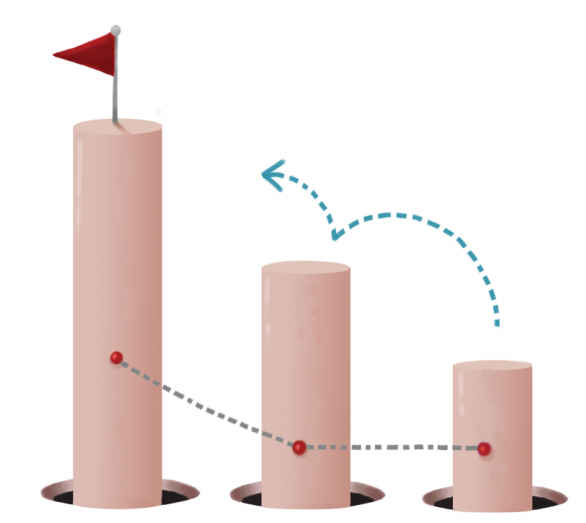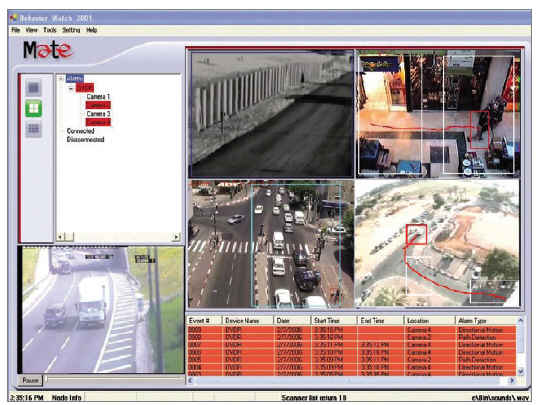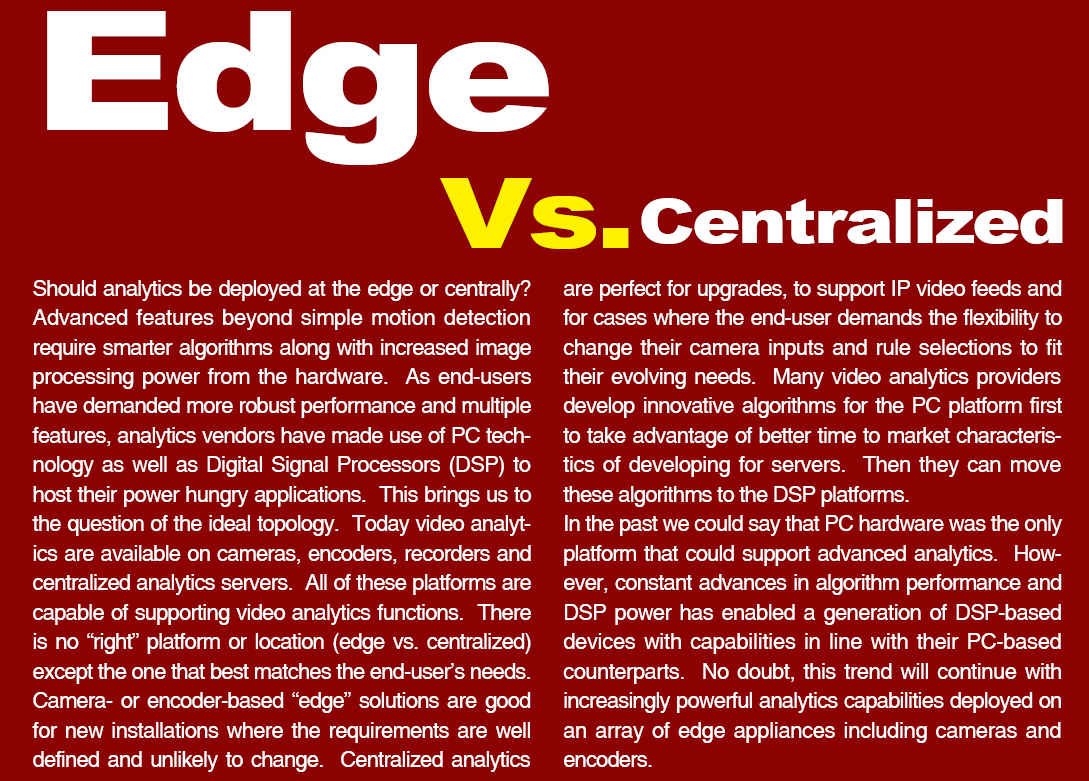By John Szczygiel

Although video analytics have confirmed their place as one of the hot trends in video surveillance questions linger about false alarms, complicated set-up and recurring tuning to environmental changes. This leads us to the question ? ¡°Can intelligent video get even smarter?¡±
VIDEO ANALYTICS SYSTEMS
Video analytics systems provide automated surveillance of numerous video channels based on parameters set by the operator. But ¡°seeing¡± for a computer actually means examining individual pixels (the smallest component of a digital image) in the images, processing them and drawing conclusions about the video content based on pattern recognition engines. In fact, typical video analytics systems have several major components that ensure quality and performance of detection.
MAJOR COMPONENTS
• Image stabilization, which gives the ability to clean up an image by removing any small image variations
• Background modeling and scene learning, removing static or recurrent objects in field of view such as trees with blowing leaves, water movement
• Scene identification
• Object extraction, to interpret the pattern of pixel changes in the image as objects and removed from the background
• Object tracking
• Object segmentation, which separates objects in the image even if they cross one another
• Rules engine, which gives a series of instructions to the system on what an operator decides, should constitute an alert
• False alarm elimination tools
THE ABILITIES
These components allow the video analytic system to learn what the typical view from the camera is and to eliminate ¡°non-target repetitive motion¡± such as blowing leaves or waves. Then, it allows the system to see objects moving in the scene and compare their patterns with the rules established by the operator. Once the system determines that an object is a real threat and has violated a rule, the system displays the video for the operator providing a visual cue in the form of a bounding box around the violator and a line indicating their direction of travel. Many video analytics systems have now the ability to link various individual rules into dependent rule sets using logic. This provides additional flexibility for the end-user to tune the rules for their specific environment.
|

|
| Mate¡¯s Behavior Watch (Photo by Mate Intelligent Video) |
WHAT¡¯S NEXT IN VIDEO ANALYTICS?
Can this artificial intelligence of filtering and detecting unwanted events be surpassed? New techniques are being developed to enhance video analytics machine learning capabilities with the goal of moving towards automated rule set-up and greater immunity to changes in video scenes. There is no doubt that we will see more sophisticated machine learning techniques in the future, turning away from simple vision analytics. However, it is quite early to solely rely on it and this capability will bring its own challenges.
¡±It requires a combination of several different technologies and a gigantic library of data and hours of analyzed scenarios to build a self-learned and calibrated system with fewer false alarms that what is available today,¡± says Dan Raudnitz, Vice President of R&D at Mate Intelligent Video.
However, parts of this future are already in use in features like MATE¡¯s SceneSwitch¢â technology which provides the capability for the system to learn and remember multiple scenes on a single video feed and automatically recognize and apply the correct rules to each of them. It is clear that video analytics vendors will further develop their automated machine learning capabilities for the next generation of video analytics systems.
INTEROPERABILITY
How do analytics fit in the overall security system? Early analytics systems were designed as stand-alone components for monitoring and management of alarms. Some systems even evolved from video analytics into generic alarm management platforms. Most still have their own special programming and alarm management user interfaces. As we have seen in the past with ID systems, DVRs and other sub-systems, video analytics capabilities are being meshed with and even consumed by various forms of Physical Security Information Management (PSIM) platforms. The approach and depth of integration vary from simple display of text-based alarms and video bookmarking to complete display, control and programming of the analytics environment from within PSIM system. Often video analytics servers are integrated directly to video management systems and accept IP video feeds.
Increasing use of standard transmission protocols also allows camera- and encoder-based analytics to transmit video along with analytic alarm data and object tracks to 3rd party systems. This provides end-users with the ability to deploy single seat management stations for video, analytic alarms, intrusion alarms and access control.
¡±Customers want to preserve the investments they have made in cameras, recording equipment, alarm management systems and operator training,¡± says Patrick Hart, Business Development Manager at MATE Intelligent Video. ¡°It¡¯s important for analytics systems to work in concert with these legacy environments while also providing a bridge to newer technologies that end-users want to adopt.¡± Several organizations are pursuing global standards for networked video products. No doubt, these efforts will improve ease-of-use and proliferation of video analytics capabilities. Perhaps more importantly, global standards will allow analytics vendors to focus on improving their core technologies rather than engaging resources on unique integrations with individual recording and management platforms.

Video analytics systems are getting smarter through improved accuracy and enhancing self-learning capabilities. Analytics vendors are improving performance and making use of more powerful platforms available at lower costs. Topology choices are available to allow integrators to find the right fit for their clients. Interoperability with third party video management and recording platforms is being pursued with open architecture approaches to enable single seat security management. Video analytics has moved into the mainstream of video and alarm management technologies and is certainly there to stay.
John Szczygiel is President of MATE Intelligent Video (http://www.mateusa.net/).
For more information, please send your e-mails to swm@infothe.com.
¨Ï2007 www.SecurityWorldMag.com. All rights reserved. |



